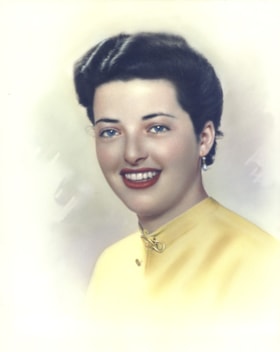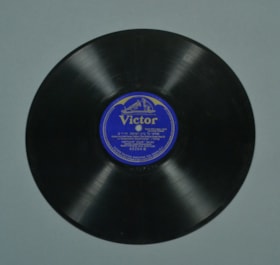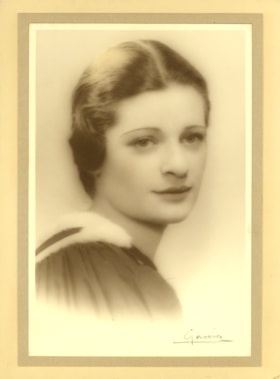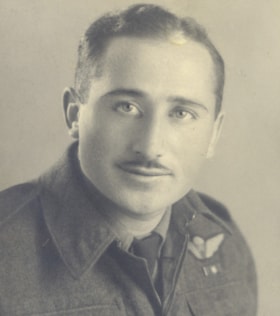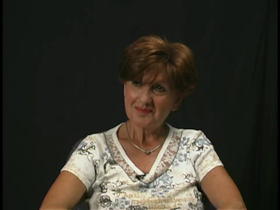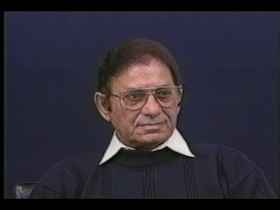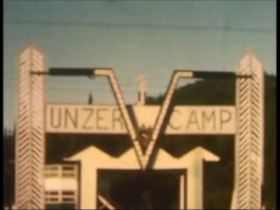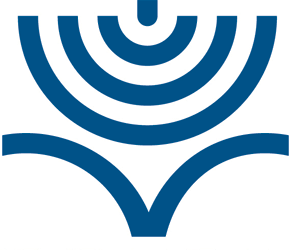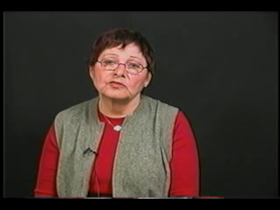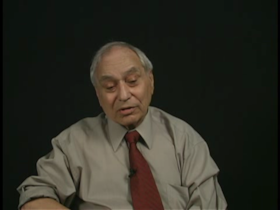More like 'genealogy87399'
Narrow Results By
Collection
- ABER, Ita 1
- BATSHAW, Justice Harry 1
- BOROD (BORODITSKY), Sam and Layah = Canadian Jewish Servicemen Memoir and Pioneer Women Na'amat 1
- CONGREGATION SHAAR HASHOMAYIM MUSEUM AND ARCHIVES 5
- Camp Kindervelt/Camp Unzer Collection 1
- Canadian Jewish Congress organizational records 1
- GOLD, Alan 1
- Henry Morgentaler and Gertrude Katz 1
- JEWISH IMMIGRANT AID SERVICES (JIAS) 1
- Jewish Public Library Historical Collection 1
- LUTSKY, Leslie = Jewish Digest Radio Show 1
- Montreal Holocaust Museum 20
Place
- Amsterdam, Netherlands, Europe 1
- Bedzin, Poland, Europe 1
- Berlin - Charlottenburg, Germany, Europe 1
- Berlin-Charlottenburg, Germany, Europe 1
- Berlin, Germany, Europe 5
- Brno, Czech Republic (Czechoslovakia), Europe 1
- Brussels, Belgium, Europe 1
- Budapest, Hungary, Europe 2
- Camden, United States of America , North America 2
- Crimmitschau, Germany, Europe 1
- Gera, Germany, Europe 1
- Hochheim am Main, Germany, Europe 1
ABER, Ita
https://www.cjhn.ca/link/cjhn285
- Collection
- ABER, Ita
- Description Level
- Fonds
- Material Type
- graphic material
- object
- moving images
- sound recording
- textual record
- Physical Description
- 13 photographs. - 4 artefacts. - 2 videos. - 1 compact disc (CD-ROM). - Env. 0.07 metres of textual records.
- Fonds No.
- P0184
- Date
- [ca. 1930]-2015.
- Scope and Content
- Recipies Mother Never Knew Mizrachi-Hapoel, 1965. Glass milk bottle designed with input from Mrs. Aber's mother for Montreal's Milk Fund, pre-WWII. Pins and badges from Zionist groups and conventions, photos of the staff of Aid to Israel 1950, Aid to Israel Jewish Youth Group 1950, Zionist Organiza…
- Collection
- ABER, Ita
- Description Level
- Fonds
- Material Type
- graphic material
- object
- moving images
- sound recording
- textual record
- Physical Description
- 13 photographs. - 4 artefacts. - 2 videos. - 1 compact disc (CD-ROM). - Env. 0.07 metres of textual records.
- Scope and Content
- Recipies Mother Never Knew Mizrachi-Hapoel, 1965. Glass milk bottle designed with input from Mrs. Aber's mother for Montreal's Milk Fund, pre-WWII. Pins and badges from Zionist groups and conventions, photos of the staff of Aid to Israel 1950, Aid to Israel Jewish Youth Group 1950, Zionist Organization of Canada 1949-1950. Material on the Jewish Child's Day Appeal. Clippings and ephemera re: Zionism, Child's Day, and actor William Shatner, a former Montrealer. 9 Photos of Montreal scenes. Material about Montreal's Talmud Torah, Jewish Artists at Congregation Shaar Hashomayim. Additions 2001: 2 photos (snapshots) of Camp Hashomer Hadati in Bronte, Ontario, Hebrew textbook and prayer book dated 1979, photo of a 9th-grade class of Baron Byng High School including Ita Aber, Clippings, 2 Videos. Additions post 2001 (passim): Articles written by Ita Aber, information about her artwork and recent exhibitions. Addition 2015: Autobiographical audio interview of Ita Herscovitch Aber recorded in New York January 9, 2015 by Renata Stein; WAV file, 56 minutes, provided on CD. Transcript of interview, done by her daughter Mindy Aber Barad via email correspondence from Israel, 30 pages. Themes covered in the interview include her early life in Montreal, art education at Baron Byng high school with teacher Ann Savage, religious background, mother's involvement in charitable efforts such as the Milk Fund, help given to a German Jewish internee and a Jewish refugee, Ita Aber's work for the Israeli consulate in Montreal in the early 1950s, her establishment in New York circa 1953, her career as a textile artist, encounters with Martin Luther King, and Judy Chicago, art groups such as the Pomegranate Guild, Jewish motifs in artwork.
- Date
- [ca. 1930]-2015.
- Fonds No.
- P0184
- History / Biographical
- Ita Aber was born in Montreal, in 1932 and grew up in a family dedicated to Zionist and charitable causes. She later moved to New York, where she made her name as an artist. As described in a 2001 article; "Ita Aber is an artist who delights in unconventional formats that provide unique and startling insights into Jewish Life. Her work is found in almost every major Jewish museum throughout the world. She is a master of the fabric arts, which is by its very nature, an interdisciplinary field. As practiced by Ita Aber, the fabric arts explode in scale to include the diverse skills of embroidering, beadwork, sewing, appliqué, silkscreen, jewelry design, weaving, painting, sculpture, and assemblage. The stunning range of her talents is reflected in the vast array of work and Judaic objects she has produced, from wall hangings, jewelry, and sculpture to Torah covers, etrog boxes, and Purim masks." Ita Aber is also known as a conservator of textiles, an art historian, a curator, teacher, and the author of The Art of Judaic Needlework: Traditional and Contemporary designs (Scribner 1979).
- Custodial History
- This collection was donated by Mrs. Ita Aber.
- Notes
- Alpha-numeric designations: P01/12, P93/08, and subsequent additions (ongoing to P15/04.). Associated material: Clippings by and about Canadian-born journalist Sam Orbaum (1956-2002), a Jerusalem Post humour columnist (donated by Ita Aber and filed under his name.) General note: The biography is from an article published in The Artists Proof, Spring 2001.
- Archival / Genealogical
- Archival Descriptions
- Repository
- Canadian Jewish Archives
Images
Achenu Kol Beth Israel
https://www.cjhn.ca/link/cjhn76686
- Collection
- Montreal Holocaust Museum
- Description Level
- Item
- Material Type
- sound recording
- Physical Description
- Phonograph record : black, blue, gold ; Ht: 30 cm
- Collection
- Montreal Holocaust Museum
- Description Level
- Item
- Material Type
- sound recording
- Physical Description
- Phonograph record : black, blue, gold ; Ht: 30 cm
- Other Title Information
- Sound Communication T&E
- Creator
- Rosenblatt, Joseph
- Language
- Hebrew
- Notes
- black 78 rpm record with blue and gold center label. Liturgical songs recorded by cantor Rosenblatt.
- Accession No.
- 2012X.24.01
- Name Access
- Weinstein, Stanley
- Archival / Genealogical
- Archival Descriptions
- Repository
- Montreal Holocaust Museum
Images
Af b'ri
https://www.cjhn.ca/link/cjhn76695
- Collection
- Montreal Holocaust Museum
- Description Level
- Item
- Material Type
- sound recording
- Physical Description
- Phonograph record : black, green, gold ; Ht: 30 cm
- Date
- 1926
- Collection
- Montreal Holocaust Museum
- Description Level
- Item
- Material Type
- sound recording
- Physical Description
- Phonograph record : black, green, gold ; Ht: 30 cm
- Other Title Information
- Sound Communication T&E
- Date
- 1926
- Creator
- Hershman, Mordechay
- Language
- Hebrew
- Notes
- Black 78 rpm record with green and gold center label. Cantorial record for the holioday of Sukkot, including the tracks: Af b'ri [af bri]; Tanchum
- Accession No.
- 2012X.24.10
- Name Access
- Weinstein, Stanley
- Archival / Genealogical
- Archival Descriptions
- Repository
- Montreal Holocaust Museum
Images
Artist Terry Lightman
https://www.cjhn.ca/link/cjhn44508
- Collection
- CONGREGATION SHAAR HASHOMAYIM MUSEUM AND ARCHIVES
- Description Level
- Item
- Material Type
- moving images
- Physical Description
- Video : DV tape : English : duration: 1 min 22 sec
- Fonds No.
- SH-01; 320
- Date
- 2002
- Description Level
- Item
- Material Type
- moving images
- Physical Description
- Video : DV tape : English : duration: 1 min 22 sec
- Date
- 2002
- Fonds No.
- SH-01
- Item No.
- 320
- Physical Condition
- Excellent
- Notes
- Interview with artist Terry Lightman, a long-time curator of the Congregation Shaar Hashomayim Museum and Library. Many of her works are shown in this video clip.
- Places
- Montreal, Quebec, Canada
- Archival / Genealogical
- Archival Descriptions
- Repository
- Congregation Shaar Hashomayim Museum and Archives
Images
YouTube
Artist Terry Lightman
https://www.youtube.com/embed/wJtC9LLn6DQAugust Camden Sampler
https://www.cjhn.ca/link/cjhn76694
- Collection
- Montreal Holocaust Museum
- Description Level
- Item
- Material Type
- sound recording
- Physical Description
- Phonograph record : black, blue, purple ; Ht: 30 cm
- Collection
- Montreal Holocaust Museum
- Description Level
- Item
- Material Type
- sound recording
- Physical Description
- Phonograph record : black, blue, purple ; Ht: 30 cm
- Other Title Information
- Sound Communication T&E
- Notes
- Black 78 rpm record with blue and purple center label
- Accession No.
- 2012X.24.09
- Name Access
- Weinstein, Stanley
- Archival / Genealogical
- Archival Descriptions
- Repository
- Montreal Holocaust Museum
Images
BATSHAW, Justice Harry
https://www.cjhn.ca/link/cjhn88127
- Collection
- BATSHAW, Justice Harry
- Description Level
- Fonds
- Material Type
- graphic material
- textual record
- object
- sound recording
- Physical Description
- Env. 62 photographs. - Env. 0.08 metres of textual records. - 7 medals. - 1 sound element.
- Fonds No.
- P0257
- Date
- 1939-2007.
- Scope and Content
- Documents include a scrapbook of fragile newclippings and publicity about the United Palestine Appeal of 1940-1941; two bound volumes of Canadan Zionist, vols 7 and 8 (1939-1941); two scrapbook folders of photocopies, one of congratulatory letters from when Harry Batshaw became a judge in 1950, and…
- Collection
- BATSHAW, Justice Harry
- Description Level
- Fonds
- Material Type
- graphic material
- textual record
- object
- sound recording
- Physical Description
- Env. 62 photographs. - Env. 0.08 metres of textual records. - 7 medals. - 1 sound element.
- Scope and Content
- Documents include a scrapbook of fragile newclippings and publicity about the United Palestine Appeal of 1940-1941; two bound volumes of Canadan Zionist, vols 7 and 8 (1939-1941); two scrapbook folders of photocopies, one of congratulatory letters from when Harry Batshaw became a judge in 1950, and one of newsclippings dating from this time (These photocopies are additions to the materials already at CJ Archives in Harry Batshaw's box, ZB collection). There is an album of photographs and documents about events such as the Negev dinner honouring Harry Batshaw, and other events (JNF, Allience Israelite Universelle, Harry Batshaw Foundation, etc). The dinner photos include pictures of family members who attended. A second photo album contains mostly family photos and portraits. Among the regular sized and smaller photographs, both loose and in albums, there are several portraits of Harry Batshaw taken at various times, including in judge's robes; picture of Harry with son Lewis (aged around 9), both wearing military-style uniforms, in front of their Westmount house; picture of son Lewis Batshaw on a boat at the Lord Reading Yacht Club and a small picture of him circa 1942 (aged around 8) holding a fish at the family's country home on Lake Connolly; family pictures in album including at Yacht Club and Lake Connolly. Two large photos: group photo of the Workman's Circle of Montreal, 1940 with Harry's father identified in the group; composite photo of Jewish judges in Canada at time of Canada's Centennial in 1967. Two large rolled JNF certificates, one with several Montreal signatures. One large rolled certificate from Hebrew University of Jerusalem. One of the loose documents in the family album is the marriage certificate for Harry Batshaw and Anne Tarshis, 1928. Other loose documents in the collection include ephemera from a royal visit to Canada and materials pertaining to the Allience Israelite Universelle and other topics. Objects: 1956 Negev Dinner commemorative certificate for Harry Bartshaw, with photo and map of land, wax seal, ribbon; in wooden-cover book inside a box. 7 medals for various commemorative honours, in an open box; two are of the same type in large and small versions, René Cassin Human Rights award, Coronation of Queen Elizabeth, Canada's 1967 Centennial. One interview of Harry Batshaw on audiocassette speaking about his brother Manny, 14 minutes 30 seconds (a digital copy was made from the tape on Feb 1, 2017.)
- Date
- 1939-2007.
- Fonds No.
- P0257
- History / Biographical
- Born in 1902, Harry Batshaw was a lawyer and a judge. He was educated at McGill University and at the Sorbonne, appointed King's Counsel in 1940 and made a Judge of the Quebec Superior Court in 1950. He was the first Jew to be appointed to a Superior Court in Canada. He was very active in Jewish community issues: notably he was honorary vice-president of the Zionist Organization of Canada; secretary of the Baron de Hirsch Institute; president of Canadian Young Judea; and cochairman of the Canadian Council of Christians and Jews. He helped found Amitiés culturelles Canada-Français-Israël. He died in 1984.
- Custodial History
- The collection was donated Sept. 9, 2016. by son Lewis Batshaw and daughter-in-law Huguette Batshaw
- Notes
- Alpha-numeric designations: P16/13, MCAT, PCAT.Associated material: See also Harry Batshaw collection P0007 (in CJC collection, series ZB).
- Archival / Genealogical
- Archival Descriptions
- Repository
- Canadian Jewish Archives
Images
Beatrice Hayes biographical interview, probably by another Sisterhood member
https://www.cjhn.ca/link/cjhn46841
- Collection
- The Spanish and Portuguese Synagogue
- Description Level
- Item
- Material Type
- sound recording
- Fonds No.
- SP-01; G; SP-01-G-34-43; 3
- Date
- 1982
- Collection
- The Spanish and Portuguese Synagogue
- Description Level
- Item
- Material Type
- sound recording
- Date
- 1982
- Fonds No.
- SP-01
- Series No.
- G
- File No.
- SP-01-G-34-43
- Item No.
- 3
- Notes
- Audio cassette, 40 minute recording (see also digital copy)
- Archival / Genealogical
- Archival Descriptions
- Repository
- The Spanish and Portuguese Synagogue
Images
BOROD (BORODITSKY), Sam and Layah = Canadian Jewish Servicemen Memoir and Pioneer Women Na'amat
https://www.cjhn.ca/link/cjhn301
- Collection
- BOROD (BORODITSKY), Sam and Layah = Canadian Jewish Servicemen Memoir and Pioneer Women Na'amat
- Description Level
- Fonds
- Material Type
- sound recording
- textual record
- graphic material
- Physical Description
- 1 compact disc (CD-ROM). - 0.3 metres of textual records. - 2 photographs. - 4 sound elements.
- Fonds No.
- P0201
- Date
- 1934-2006 Scancopy.
- Scope and Content
- Diary written while a World War II soldier, in a small notebook, also available in digital format; comprising 33 out of the approximately 127 pages of scanned materials, which also include newsclippings and photographs. CD of the digital copies of the diary and other documents, as initially receive…
- Collection
- BOROD (BORODITSKY), Sam and Layah = Canadian Jewish Servicemen Memoir and Pioneer Women Na'amat
- Description Level
- Fonds
- Material Type
- sound recording
- textual record
- graphic material
- Physical Description
- 1 compact disc (CD-ROM). - 0.3 metres of textual records. - 2 photographs. - 4 sound elements.
- Scope and Content
- Diary written while a World War II soldier, in a small notebook, also available in digital format; comprising 33 out of the approximately 127 pages of scanned materials, which also include newsclippings and photographs. CD of the digital copies of the diary and other documents, as initially received and scanned by Tatiana Jour in the context of her Russian Jewish Archives Project. It was noted at the time of the donation to the Archives that further materials on UNRAA (postwar aid to refugees) and Na'amat could be donated by the Borods at a later date. Added in 2007: Materials in prose, poetry and song pertaining to the history of Pioneer Woman Na'amat and Revivim, composed by Layah Surchin Borod. Binder of publicity clippings and ephemera of Na'amat. Binder of songs. Binder of Layah's memoirs, in verse, 1923-1960. Shaare Tzedek synagogue bulletins with material written by Layah or about Sam. Biography of Sam Borod written by Layah, including pre-war and wartime experiences. 4 cassette tapes of Revivim events. 2 original 1940s portrait photos, one each of Layah and Sam, Sam's portrait autographed to Layah. Small WWII Jewish serviceman's calendar and notebook, both with addresses as well as Japanese phrases.
- Date
- 1934-2006 Scancopy.
- Fonds No.
- P0201
- History / Biographical
- Born in 1914, Sam Boroditsky of Montreal (the name was later changed to Borod) was a veteran of the European front in WWII. He was a paratrooper in Italy and the Aleutian Islands during WWII, earning many Canadian service decorations. He later worked in UNRAA, helping refugees overseas. His wife Laya (Surchin) Borod, born in 1922, was the daughter of Chaya Surchin, an early Zionist activist in Montreal. Layah was the first national executive director of Naamat Pioneer Women Canada and was the editor of their magazine. She was also the only Canadian president of the Pioneer Women Na'amat of America. Laya Borod worked in the office of CJC during the war, rising to office manager at age 19. She was active in Na'amat until her death in 2006. Sam Borod died in Montreal on May 8, 2012.
- Custodial History
- The collection was donated by Sam Borod on May 26, 2005. The Borod collection came to CJCNA after Sam Borod approached Tatiana Jour at the Jewish Veteran's talk given by Jour. Addition 2007 was donated by Sam Borod on April 12, 2007.
- Notes
- Alpha-numeric designations: P05/08, P07/11.General note: Historical materials pertaining to women's involvement in Zionist organization, women's personal history, literary creations, also wartime experiences of a Canadian paratrooper.
- Archival / Genealogical
- Archival Descriptions
- Repository
- Canadian Jewish Archives
Documents
Images
Brinberg, Georgette - Oral History of a Holocaust Survivor
https://www.cjhn.ca/link/cjhn60315
- Collection
- WITNESS TO HISTORY COLLECTION (MHMC-02)
- Description Level
- Item
- Material Type
- moving images
- Physical Description
- 01:32:00
- Collection
- WITNESS TO HISTORY COLLECTION (MHMC-02)
- Description Level
- Item
- Material Type
- moving images
- Physical Description
- 01:32:00
- Language
- English; French
- Notes
- Georgette Brinberg (née Tepicht) was born on June 10, 1938 in the mining town of Villerupt in northern France. In the 1940s, when the town was attacked by Germany, her mother, father and older sister fled to Paris. Although she was young, she remembers that her father in 1940 was rounded-up and sent to a working camp, and eventually to Auschwitz. In July 1942, she, her sister and mother were rounded up and sent off to the Vélodrome d’Hiver where she stayed for a week until she was split up from her mother and destined to be sent to Auschwitz. Fortunately, Georgette and her sister were able to flee the Vel d’Hiv and were sent to Morée. She does not remember how she ended up there, but she does know that she was in hiding with her sister, and that there was a constant fear of being captured. She had to learn all the Catholic rites in order to pass off as a Catholic girl. In 1944, about the time of the liberation of France, she once more fled Morée and returned to Paris after jumping onto an American truck. Once she arrived in Paris with her sister, they sought out their grandmother who was still in hiding. All three stayed in hiding until the end of the war, and eventually moved to Israel in 1948. In Israel, she joined the Kibbutz – a collective community traditionally based on agriculture. She stayed there, learning Yiddish, until the 1950s. She eventually decided to move to Canada where her sister lived with her husband. In 1955, she finally arrived in Montreal where she went to business school and worked in the Quebec Order of Chartered Accountants. She married in 1957 and had three kids. In subsequent years, she researched the whereabouts of her family and tried to find a trace of those that helped her. She even returned to Paris to learn more about her past and her family legacy. She feels that her story should be told for future generations to remember, in her words: “if I can tell my grandchildren, then why not everyone [else]?”
- Accession No.
- WTH-462
- Name Access
- Brinberg, Georgette
- Places
- Villerupt, France, Europe
- Archival / Genealogical
- Archival Descriptions
- Repository
- Montreal Holocaust Museum
Images
Calderon, Leon - Oral History of a Holocaust Survivor
https://www.cjhn.ca/link/cjhn60302
- Collection
- WITNESS TO HISTORY COLLECTION (MHMC-02)
- Description Level
- Item
- Material Type
- moving images
- Physical Description
- 02:02:03
- Collection
- WITNESS TO HISTORY COLLECTION (MHMC-02)
- Description Level
- Item
- Material Type
- moving images
- Physical Description
- 02:02:03
- Language
- English
- Notes
- Leon Calderon was born in 1926 in Salonika, Greece, to a family of Yugoslavian origins. He had four siblings who, along with his parents, perished in Auschwitz in 1943, except for one brother who died in the Warsaw ghetto. After the war broke out in Greece, he lived in Salonika in the ghetto until April 1943, when he was deported to Auschwitz-Birkenau. He was there for about six months. In October 1943, he was transferred to the Warsaw ghetto, where he had to clean up and collect bricks after the uprising. In June 1944 the Russians were approaching, and after a five-day death march, he was transferred by train to Dachau, where he remained for a week. Then he was transferred to the Mildorf labor camp in Germany, where he worked on the construction of a tunnel until April 1945. With the American Army approaching, they were put on a train, which was also bombed, and were finally liberated on April 30, 1945 by the Americans. Leon stayed for a week in a DP camp near Munich, then for a month in the Landsberg DP camp. He returned to Salonika until the Greek civil war began in 1949. He moved to Israel, returning to Salonika in 1953 to obtain visas for Canada. In August 1955, he came to Canada by boat. He got married and he had two daughters. He worked as a salesman and manager of a store, and owned his own company until 1975.
- Accession No.
- WTH-161
- Name Access
- Calderon, Leon
- Places
- Salonika, Greece, Europe
- Archival / Genealogical
- Archival Descriptions
- Repository
- Montreal Holocaust Museum
Images
Camp Kindervelt
https://www.cjhn.ca/link/cjhn78146
- Collection
- Camp Kindervelt/Camp Unzer Collection
- Description Level
- Fonds
- Material Type
- moving images
- Physical Description
- 1 film reel : col.
- Fonds No.
- 1357; 1357_001
- Date
- 1949-1954
- Collection
- Camp Kindervelt/Camp Unzer Collection
- Description Level
- Fonds
- Material Type
- moving images
- Physical Description
- 1 film reel : col.
- Date
- 1949-1954
- Fonds No.
- 1357
- Item No.
- 1357_001
- Storage Location
- 8-5A
- Notes
- Film capturing daily activities at Camp Kindervelt and Camp Unzer, between 1949-1954.
- Archival / Genealogical
- Archival Descriptions
- Repository
- Jewish Public Library Archives
Images
YouTube
Camp Kindervelt
https://www.youtube.com/embed/VeTryjsBiDUCanadian Jewish Congress organizational records
https://www.cjhn.ca/link/cjhn2
- Collection
- Canadian Jewish Congress organizational records
- Description Level
- Fonds
- Material Type
- textual record
- graphic material
- sound recording
- moving images
- Physical Description
- Env. 361.57 metres of textual records. - Env. 14100 photographs. - 1531 sound elements. - 43 films. - 1017 videos.
- Fonds No.
- CJC0001
- Date
- 1765-present.
- Scope and Content
- The collection consists of several classes of material, as described in the series descriptions below. While the CJC materials begin in 1919, Series Z, the documentation collection, contains material that precedes this date, a few items going back even as far as the earliest settlement of Jews in C…
- Description Level
- Fonds
- Material Type
- textual record
- graphic material
- sound recording
- moving images
- Physical Description
- Env. 361.57 metres of textual records. - Env. 14100 photographs. - 1531 sound elements. - 43 films. - 1017 videos.
- Scope and Content
- The collection consists of several classes of material, as described in the series descriptions below. While the CJC materials begin in 1919, Series Z, the documentation collection, contains material that precedes this date, a few items going back even as far as the earliest settlement of Jews in Canada in the late 18th century.
- Date
- 1765-present.
- Fonds No.
- CJC0001
- History / Biographical
- Canadian Jewish Congress was founded in Montreal in March 1919. "The Parliament of Canadian Jewry," CJC was constituted as the democratically elected, national organizational voice of the Jewish community of Canada, serving as the community's vehicle for defence and representation. Committed to preserving and strengthening Jewish life, CJC acted on matters affecting the status, rights and welfare of the Canadian Jewish community, other Diaspora communities and the Jewish people in Israel. CJC combatted antisemitism and racism, promoted human rights, fostered interfaith, cross-cultural relations and worked towards tolerance, understanding and goodwill among all segments of society in a multicultural Canada. The organization spoke on a broad range of public policy, humanitarian and social-justice issues on the national agenda that affected the Jewish community and Canadian society at large. Through its charitable operations, CJC provided domestic and international relief aid on a non-sectarian basis, following natural disasters and to isolated Jewish communities in need. The Archives department also fell under the mandate of CJC Charities Committee. In 1999 the CJC national office relocated to Ottawa, with three regional CJC offices (Quebec, Ontario and Pacific), as well as affiliated offices across the country. CJC ceased operations in July 2011, when it was absorbed into the newly-created Centre for Israel and Jewish Affairs (CIJA), along with the Canada-Israel Committee, the Quebec-Israel Committee, National Jewish Campus Life and the University Outreach Committee. CJC and its charitable wing were formally disbanded in late 2015. Since that time the CJCCC National Archives, renamed the Alex Dworkin Canadian Jewish Archives as of January 2016, functions under the aegis of Jewish Federations Canada UIA.
- Custodial History
- Both the national headquarters and the Quebec Jewish Congress (formerly Quebec Region, Eastern Region) offices of the Canadian Jewish Congress were located in Montreal until 1999, when most of the national office relocated to Ottawa. The National Archives is the repository of records created and received in these offices. The collection also includes materials from the National Office in Ottawa, as well as the national records of Manuel Prutschi, Bernie Farber, and other national departments based in Toronto and Vancouver. The regional offices of Canadian Jewish Congress outside Quebec are little represented in the collection, aside from correspondence from across the country and certain publications which were addressed to the national office.
- Notes
- General note: The number of paper records in this collection is subject to change, due to additions to Documentation Series Z as well as the ongoing weeding of duplications. Most of the material was created after 1919, with the exception of Series Z, which includes photocopies and a small number of originals dating back as far as 1765.
- Archival / Genealogical
- Archival Descriptions
- Repository
- Canadian Jewish Archives
Images
A Chazen Del Auf Shabes / Wie Lang Noch?
https://www.cjhn.ca/link/cjhn76702
- Collection
- Montreal Holocaust Museum
- Description Level
- Item
- Material Type
- sound recording
- Physical Description
- Phonograph record : black, green, gold ; Ht: 30 cm
- Date
- 1920
- Collection
- Montreal Holocaust Museum
- Description Level
- Item
- Material Type
- sound recording
- Physical Description
- Phonograph record : black, green, gold ; Ht: 30 cm
- Other Title Information
- Sound Communication T&E
- Date
- 1920
- Creator
- Rothstein, Shloimele
- Notes
- Black 78 rpm record with green and gold center label
- Accession No.
- 2012X.24.17
- Name Access
- Weinstein, Stanley
- Archival / Genealogical
- Archival Descriptions
- Repository
- Montreal Holocaust Museum
Images
Cieply, Isak - Oral History of a Holocaust Survivor
https://www.cjhn.ca/link/cjhn67767
- Collection
- WITNESS TO HISTORY COLLECTION (MHMC-02)
- Description Level
- Item
- Material Type
- moving images
- Physical Description
- 02:26:32
- Collection
- WITNESS TO HISTORY COLLECTION (MHMC-02)
- Description Level
- Item
- Material Type
- moving images
- Physical Description
- 02:26:32
- Language
- English
- Notes
- Isak Cieply was born on February 1, 1924 in Starachowice, Poland. He had five siblings and the family was very poor. In the fall of 1939, soon after the German invasion, the Jews of Starachowice were ordered to move into the ghetto. Isak was selected to work in a steel factory and his work pass protected him from round-ups. At the beginning of 1943 he was sent to the Bugaj camp to work in a supplies warehouse. In the summer of 1944 the camp was liquidated after rumours of the approach of the Soviet army had spread. The prisoners were taken to Auschwitz. Isak was sent to work in an electric supplies warehouse in Buna/Auschwitz III. There he met a German soldier who proposed a deal that Isak accepted. Isak was to supply this soldier with electric materials and, in return, he would get a loaf of bread every day. In January 1945 Isak was sent on a death march to the Flossenbürg concentration camp. Sometime later he was sent on another death march but succeeded to escape with some fellow prisoners. They eventually met American soldiers. After liberation Isak worked as the chief supplier of the Pfarrkirchen and Eggenfelden DP camps. He immigrated to Canada in 1948 and married the late Regina Cieply who was also a survivor. They had four children and several grandchildren, among them Jamie Benizri.
- Accession No.
- WTH-213
- Name Access
- Cieply, Isak
- Archival / Genealogical
- Archival Descriptions
- Repository
- Montreal Holocaust Museum
Images
YouTube
Cieply, Isak - Oral History of a Holocaust Survivor
https://www.youtube.com/embed/eIbnIGm8Rg8Cohen, Matla - Oral History of a Holocaust Survivor
https://www.cjhn.ca/link/cjhn60312
- Collection
- WITNESS TO HISTORY COLLECTION (MHMC-02)
- Description Level
- Item
- Material Type
- moving images
- Physical Description
- 01:28:09
- Collection
- WITNESS TO HISTORY COLLECTION (MHMC-02)
- Description Level
- Item
- Material Type
- moving images
- Physical Description
- 01:28:09
- Language
- English
- Notes
- Matla Cohen was born November 15th, 1934 in Mezrich, Poland. She comes from a family of six that include two sisters and one twin brother. The pre-war period is somewhat unfamiliar to her due to her very young age, but her first real awareness of the war was when she and her family had to hide out in the garden after areas around her home were bombarded. In 1939-40, she and her family had been relocated to Vitebsk, Belarus. Her parents worked in a factory and she was in a nursery with her brother. Once more, they were forcefully relocated to a labour camp in Siberia. Her parents worked early and returned at night, while Matla was placed in a barrack and became caretaker of her siblings. She recalls her time there as being: “very difficult”. Ultimately, her family escaped the barrack as her father bribed a commandant with the prospect of a tailored suit. They finally got to an area in the Caucasus Mountains where they lived until the war ended. After the war, they returned back to Poland. They lived there for a month where the Madrichim approached their parents in hopes of sending Anne to Israel. She was separated from her family and sent to a DP camp in Berlin, awaiting the transport to Israel. In the end, that never took place as she jumped from camp to camp until a French Canadian woman in one of them suggested that she move to Montreal; a suggestion she followed in 1948. In Canada, she was adopted by a local family in Ste. Agathe and lived there until she attended college at the age of 18 in Montreal. She would visit her family in Ste. Agathe most weekends, and that is where she met her first husband; a marriage which lasted ten years. A few years later she met her second husband, Benjamin, to whom she is still married. She has five children.
- Accession No.
- WTH-448
- Name Access
- Cohen, Matla
- Places
- Mezrich, Poland, Europe
- Archival / Genealogical
- Archival Descriptions
- Repository
- Montreal Holocaust Museum
Images
Congregation Shaar Hashomayim's Programs for Elderly People
https://www.cjhn.ca/link/cjhn44497
- Collection
- CONGREGATION SHAAR HASHOMAYIM MUSEUM AND ARCHIVES
- Description Level
- Item
- Material Type
- moving images
- Physical Description
- Video : English : duration: 28.67 seconds
- Fonds No.
- SH-01; 222
- Date
- 2001
- Description Level
- Item
- Material Type
- moving images
- Physical Description
- Video : English : duration: 28.67 seconds
- Date
- 2001
- Fonds No.
- SH-01
- Item No.
- 222
- Physical Condition
- Excellent
- Notes
- "The Open Gate" is a weekly socializing program for the elderly, organized by the Congregation.
- Places
- Montreal, Quebec, Canada
- Archival / Genealogical
- Archival Descriptions
- Repository
- Congregation Shaar Hashomayim Museum and Archives
Images
YouTube
Congregation Shaar Hashomayim's Programs for Elderly People
https://www.youtube.com/embed/fZ6e_IpxxtcDawang, Elie - Oral History of a Holocaust Survivor
https://www.cjhn.ca/link/cjhn60321
- Collection
- WITNESS TO HISTORY COLLECTION (MHMC-02)
- Description Level
- Item
- Material Type
- moving images
- Physical Description
- 03:55:00
- Collection
- WITNESS TO HISTORY COLLECTION (MHMC-02)
- Description Level
- Item
- Material Type
- moving images
- Physical Description
- 03:55:00
- Language
- French
- Notes
- Elie Dawang was born on January 4, 1934 in Paris, France, to Lithuanian parents. Elie has good memories of his early childhood, being raised by loving and well-off parents. In May 1940, the Dawangs left Paris for a small village near the Spanish border. Despite the great danger, they went back to Paris to liquidate the business of Feivish, Elie’s father. The three of them were arrested in September 1941 and while Feivish managed to get Elie out of prison, he couldn’t do anything to save himself or his wife. They were both sentenced and sent to jail for possessing false papers. They both ended up in Auschwitz, but Elie’s mother was gassed upon arrival whereas Feivish survived the war. Meanwhile, Elie was being taken care of by a Jewish woman. Elie and his caretaker almost got arrested during the roundup of Vel d’Hiv but managed to hide. After a few months hiding in the suburbs of Paris, they moved to the country where they stayed until liberation. When Paris was liberated, they moved back there and Elie returned to school. He reunited with his father in May 1945. They moved to Canada in 1951 with Elie’s stepmother. Elie describes the process to immigrate, his first impressions of Montreal and Canada and his involvement in Holocaust education.
- Accession No.
- WTH-482
- Name Access
- Dawang, Elie
- Places
- Paris, France, Europe
- Archival / Genealogical
- Archival Descriptions
- Repository
- Montreal Holocaust Museum
Images
YouTube
Dawang, Elie - Oral History of a Holocaust Survivor
https://www.youtube.com/embed/f95UEOppbHEDawidovicz, David - Oral History of a Holocaust Survivor
https://www.cjhn.ca/link/cjhn60325
- Collection
- WITNESS TO HISTORY COLLECTION (MHMC-02)
- Description Level
- Item
- Material Type
- moving images
- Physical Description
- 02:48:00
- Collection
- WITNESS TO HISTORY COLLECTION (MHMC-02)
- Description Level
- Item
- Material Type
- moving images
- Physical Description
- 02:48:00
- Language
- French
- Notes
- David Dawidovicz was born on July 17, 1924 in Lodz, Poland. Soon after, his family moved to Tel-Aviv, Israel, where they stayed until 1931. At that point, they moved to Paris because of endemic poverty in Tel-Aviv. After four years in France, David, his mother and two of his sisters were expelled from France because they were illegal immigrants, unlike David’s father. David remembers the train journey through Germany, seeing lots of swastikas on buildings and on uniforms. He and his relatives spent six months in Lodz. There, David realized that Jews in Poland weren’t as emancipated as Jews in France. Back to France, David attended school until the war began. In 1941 and 1942, he witnessed several roundups. During the Vel d’Hiv roundup of July 1942, he hid in a small apartment with other people. They were able to hide thanks to French policemen who used to warn Jews. David hid for several weeks. He was eventually arrested in August 1942 by French policemen who took him to the offices of the UJF (Union des Juifs français). This organization gave money to the French police to send Jews to work in the Ardennes (a French region) instead of deporting them to Poland. David worked there until January 1944, at which point he decided to escape and join the resistance. He partook in the liberation of Paris. After the war, David took part in a program to de-Nazify the German youth. He lives in Paris to this day.
- Accession No.
- WTH-534
- Name Access
- Dawidovicz, David
- Places
- Lodz, Poland, Europe
- Archival / Genealogical
- Archival Descriptions
- Repository
- Montreal Holocaust Museum
Images
Dlusy, Jon - Oral History of a Holocaust Survivor
https://www.cjhn.ca/link/cjhn60314
- Collection
- WITNESS TO HISTORY COLLECTION (MHMC-02)
- Description Level
- Item
- Material Type
- moving images
- Physical Description
- 01:50:00
- Collection
- WITNESS TO HISTORY COLLECTION (MHMC-02)
- Description Level
- Item
- Material Type
- moving images
- Physical Description
- 01:50:00
- Language
- English
- Notes
- Jon Dlusy was born Yonah Dlusniewski on October 29, 1927 in Berlin, Germany, to Polish parents. They had moved to Germany in 1919, living in the Charlottenburg area of Berlin. There, his father had established a clothing manufacturing business. Jon had an older brother who later worked for the Canadian Air Force and got killed in Scotland in 1944 returning from an operation. In May 1938, Jon’s father decided to leave Germany because of the increasing antisemitism. They obtained visas for Belgium and fled Germany, leaving everything behind. They stayed in Antwerp for about four months, waiting for the Canadian visas. Once they received them, they immigrated to Montreal via Liverpool and Halifax. They already had family in Canada. They lived in Outremont. Jon is now retired. His mother lived until 101 years old.
- Accession No.
- WTH-455
- Name Access
- Dlusy, Jon
- Places
- Berlin, Germany, Europe
- Archival / Genealogical
- Archival Descriptions
- Repository
- Montreal Holocaust Museum
Images
Dudky Brat
https://www.cjhn.ca/link/cjhn76693
- Collection
- Montreal Holocaust Museum
- Description Level
- Item
- Material Type
- sound recording
- Physical Description
- Phonograph record : maroon, gold ; Ht: 30 cm
- Collection
- Montreal Holocaust Museum
- Description Level
- Item
- Material Type
- sound recording
- Physical Description
- Phonograph record : maroon, gold ; Ht: 30 cm
- Other Title Information
- Sound Communication T&E
- Creator
- Lebedeff, Aaron
- Language
- Yiddish
- Notes
- Maroon 78 rpm record with black and gold center label
- Accession No.
- 2012X.24.08
- Name Access
- Weinstein, Stanley
- Archival / Genealogical
- Archival Descriptions
- Repository
- Montreal Holocaust Museum
Images
{{ server.message }}
